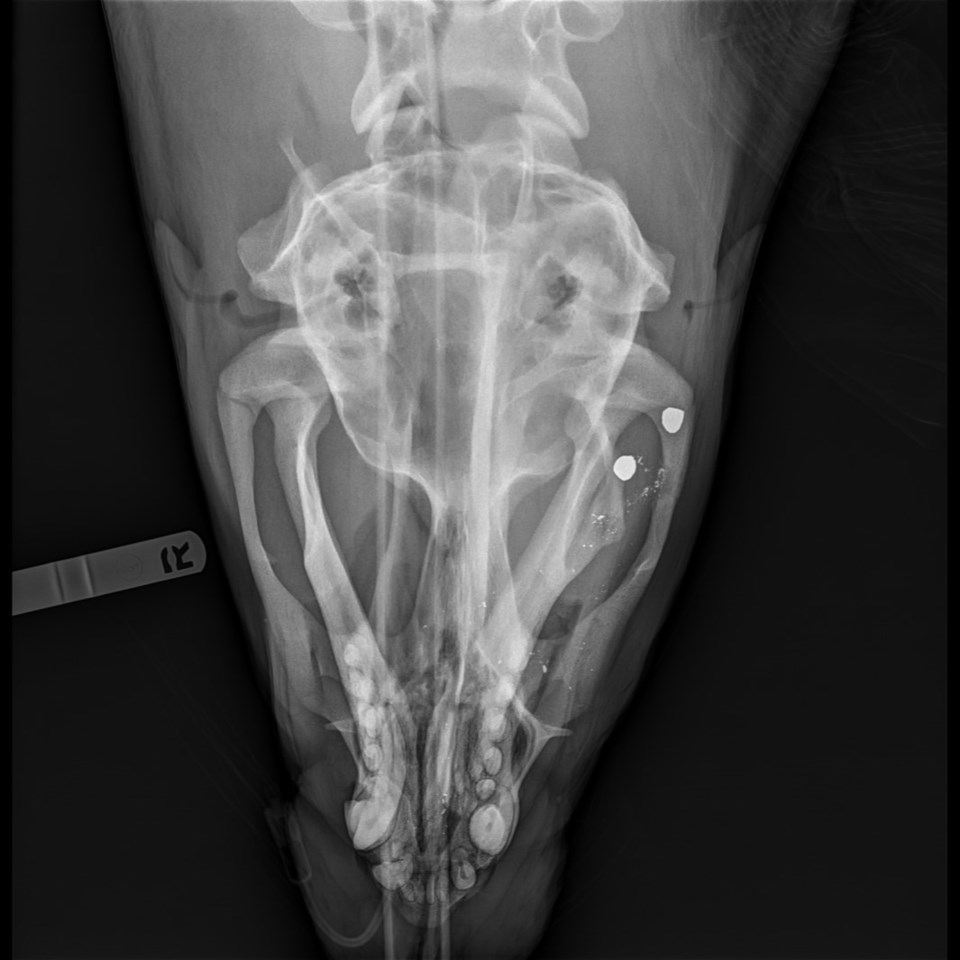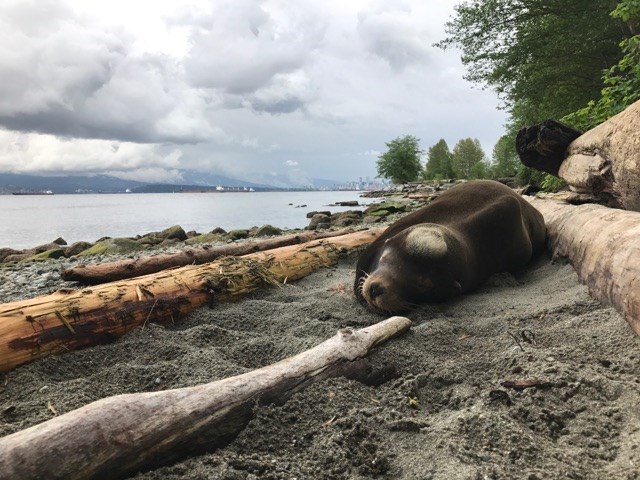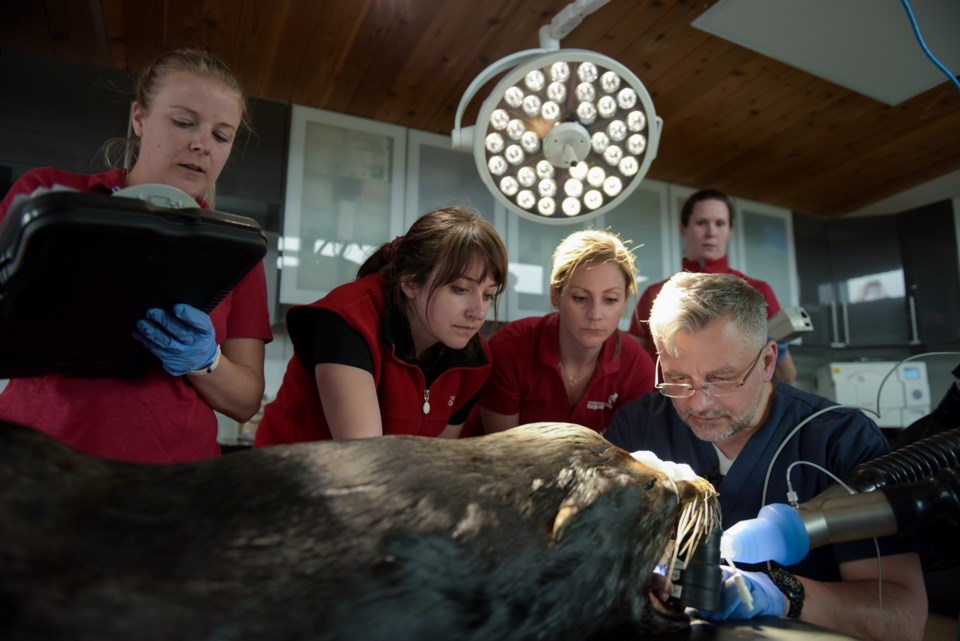A sea lion found dying at Spanish Banks last week was shot twice in the face and may not survive in the wild, meaning it won’t return to the ocean if it lives.
Such a judgement call is left to the federal ministry of fisheries and oceans, but the dilemma rests with the Vancouver Aquarium where veterinary teams rescue but cannot always release those marine animals back to their natural habitat.
“Release is the goal for every animal rescued by the Marine Mammal Rescue Program,” confirmed the aquarium in a news release today with an update about the injured sea lion.
Named Señor Cinco because he was found on May 5, a national holiday in Mexico celebrated as Cinco de Mayo, the male California sea lion was likely shot by a small-calibre gun, according to veterinary reports.
The injured animal was emaciated, lethargic and unresponsive. On May 9, he was put under general anesthetic and given a full examination by the veterinary team, and the aquarium described his condition as “grim.”

“He was shot at least twice in the face, with bullets shattering his teeth, blinding him in one eye, and possibly hitting his optic nerve. The injuries were not new and he’s underweight, which means Señor Cinco has likely been in distress for weeks,” according to the news release based on assessment from head veterinarian Martin Haulena.
“The injuries he sustained at the hands of humans left him in pain and unable to forage on his own. We’re happy we can ease his suffering, but he has a long road to recovery ahead,” said the vet.
If the ministry determines the animal will not survive on his own in the wild, he will not be returned to the ocean.
The Marine Mammal Rescue Centre in the past year has treated 174 animals, including dozens of harbour seals. A false killer whale was brought to the centre from a Tofino-area beach in 2014 and that animal, named Chester, is now housed at the aquarium because he was considered too young to survive on his own in the wild.
The aquarium has long argued it is inhumane euthenize wild animals when they could be cared for and treated by humans. If they cannot be fully rehabilitated, however, those animals will likely live in an aquarium. In response to that fate, opponents to animals in captivity say it is more ethical to let wild animals die in the wild.
The work of the Marine Mammal Rescue Centre is in the news only a few days before the Vancouver park board discusses the specifics of a cetacean ban at the aquarium.
Park board chairman Michael Wiebe said commissioners support the work at the rescue centre but will not budge on allowing new whales, dolphins or porpoises in any city park.

California sea lions breed off the coast of southern California and Mexico’s Baja peninsula, but during the non-breeding season over the winter, many male animals migrate north to B.C. They were hunted for thousands of years but because their numbers dropped this century, they were protected in the 1970s. The current population of California sea lions is considered healthy.
Last summer, the Seattle Met investigated the shooting deaths of numerous sea lions in Puget Sound and reported that “44 of the animals were gunned down in Washington and Oregon alone” in the previous two years but “not a single person has been prosecuted for any of those shootings.”
Since a large portion of sea lion’s diet is salmon and steelhead, sources in the article put the blame at the feet of recreational and commercial fishers.
Canada’s Department of Fisheries and Oceans did not immediately respond to interview requests.
Twitter: @MHStewart



